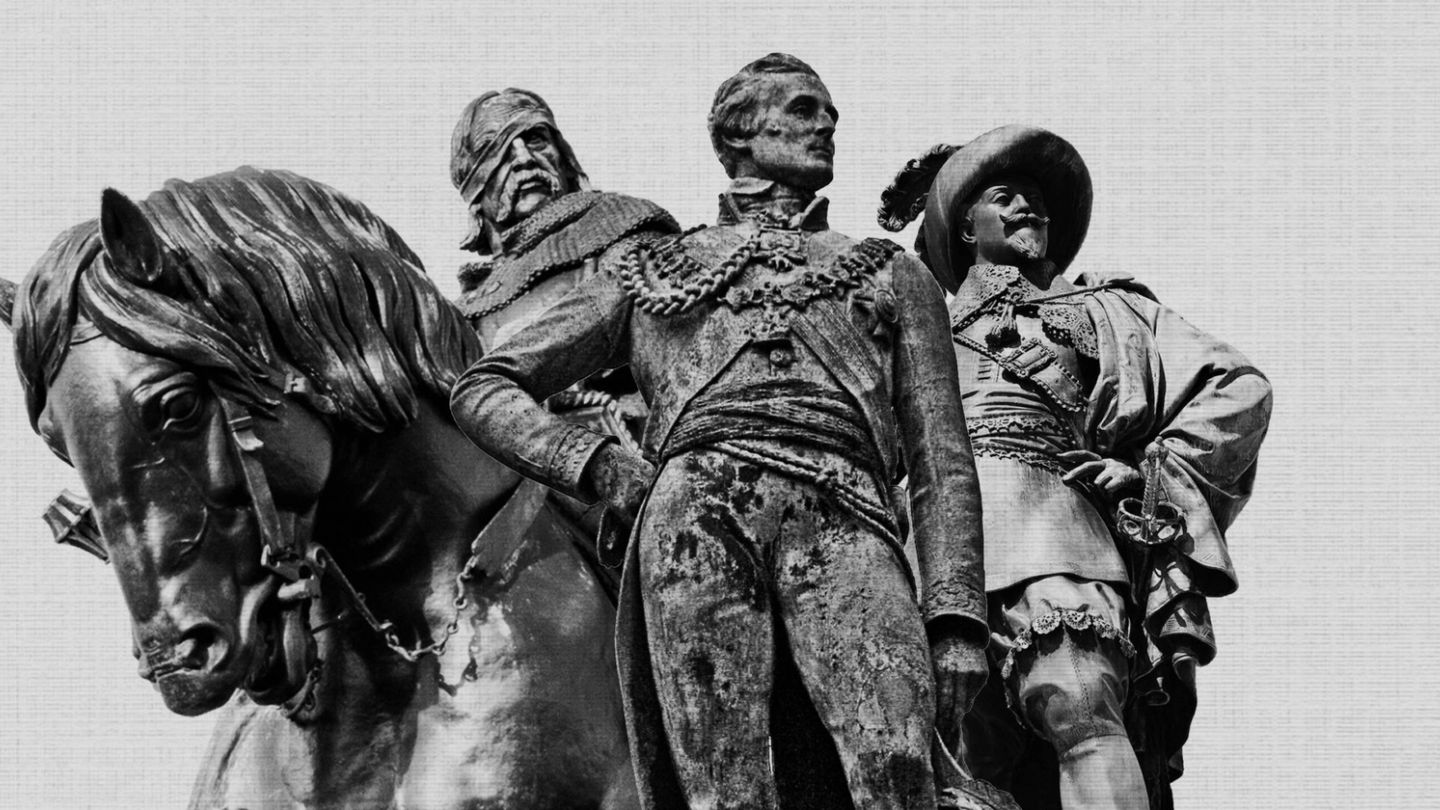

Words: Gentleman's Journal
War. It’s a nasty business. But do you know what else can be a nasty business? Business. That’s right. The corporate world is a cut-throat place, with armies of power-suited tycoons and traders doing battle daily in boardrooms across the world. It takes steely nerves, a canny mind and ruthless ambition to make it in modern business — so we know just who to teach us.
Below, we’ve rounded up five of the most revered, respected and successful military minds of the past thousand years for inspiration. These were men who ended wars, dismantled empires and reformed whole nations. So take their moral codes and life lessons and apply them to your own life — you’ll be surprised by what you can achieve…
General George S. Patton (1885—1945)
Who was he? One of many World War Two generals who could have made this list. Other contenders? Zhukov, Rommel, von Kleist, Alexander, to name but a few. But Patton, whose controversial comments occasionally overshadowed his wartime achievements, was undoubtedly one of the period’s most brilliant military minds.
What did he do? In 1942, he effectively rehabilitated demoralised troops and rapidly drove across France, before relieving American soldiers during the Battle of the Bulge and driving deep into Nazi Germany to end the war. But we’re most impressed by a feat he achieved before that global conflict — developing the US Army’s armoured warfare doctrine and taking part in America’s first ever military action using motor vehicles.
What can we learn from him? To move with the times, and embrace new developments and opportunities. Other military men would likely have denounced motor-powered warfare — yet Patton took the initiative to use this new technology to his, and the world’s advantage. So, next time your office switches software (we’re thinking Zoom to Microsoft Teams), think of Patton — and fly the flag of progress.
Jan Žižka (1360—1424)
Who was he? A Czech general, exceedingly successful military leader and a national icon to this day. He had an eyepatch (and was nicknamed ‘One-eyed Žižka’), led the victorious Hussite armies against the German king Sigismund and became a folk hero of the highest order.
What did he do? Aside from never being defeated in battle, he invented the idea of a tank, and became the first general to use cannons as field weapons rather than simple siege guns (his guns, ‘houfnice’ later leant their name to English ‘howitzer’ artillery guns). Žižka also had an odd dying request: that his skin be turned into war drums so he could keep leading his men after his death.
What can we learn from him? Surprisingly, that grisly skin request is quite helpful. Why? Because it shows both selflessness and forward-planning. When Žižka was dead, he had no reason to care about the wellbeing of his men any more — and yet he laid down altruistic contingencies to ensure things would keep running smoothly. And while, teeing up a neat spreadsheet for your next team manager may not compare to the defeat of the Holy Roman Empire, it’s a start…
Gustavus Adolphus (1594—1632)
Who was he? ‘The Father of Modern Warfare’, or so the epithet goes. That, or ‘Gustav the Great’. Or ‘The Lion of Midnight’. All good nicknames. Gustavus Adolphus was the King of Sweden, and the man who steered Scandinavia through the grim Thirty Years’ War. All the while, he kept that Van Dyke beard in immaculate shape. Impressive stuff.
What did he do? Other than the tip-top facial haircare? He also championed the use of dynamite, helped determine the political and religious balance of power in Europe — and used resources and logistics to become one of the greatest military commanders in modern history. Specifically, he pioneered the concept of ‘Combined Arms’, wherein many different troops and forces of a military are deployed alongside one another to achieve the upper hand.
What can we learn from him? That it’s better to work as a team. Adolphus may not have had many Powerpoint presentations to plan or quarterly reports to write, but he was a top delegator — and knew where best to deploy the manpower at his disposal. The lesson we should learn from the Swedish nobleman is that, if you have resources available that could help you, you should use them.
Arthur Wellesley, 1st Duke of Wellington (1769—1852)
Who was he? He’s the man who fought, almost non-stop, across India, Spain, France and Belgium for 16 long, arduous years. But, like Žižka above, he was never defeated in a major battle — and never lost a campaign. He also was the man who lobbied (successfully) to prevent Napoleon’s execution after Waterloo. Noble by both birth and nature.
What did he do? Mastered the art of war. Wellington had an amazing ability to improvise, to create devastatingly effective defences (look to Talavera, Busaco, Salamanca and Vittoria for proof) and to boldly, rapidly attack his enemies (as at Assaye). He also is frequently misquoted as having calling his soldiers the ‘scum of the earth’. In reality, he said his soldiers had been recruited from the ‘scum of the earth’ and that “it really is wonderful that we should have made them the fine fellows they are”.
What can we learn from him? Not to judge a book by its cover. Whether in business or on the battlefield, it takes time to hone talent — and Wellington saw the potential in his men before even they did. Seeing the best in people is an invaluable quality to have, as you’ll more often be surprised by their skills than disappointed.
Frederick II of Prussia (1712—1786)
Who was he? A Prussian king and military leader — and the longest reigning of all the Hohenzollern kings. His youth was marred by a jarring relationship with his father, who tried to direct his energies away from music, art and philosophy and towards war. Frederick’s father even beheaded his son’s lover — and subsequently caught him as he tried to flee the country.
What did he do? In spite of all the tyrannical trauma, once Frederick ascended to the throne he showed grace, kindness and courage. A cultured, sporting leader, he modernised the judicial system, permitted all religions to be practiced freely — and proved himself a genius of military theory. During his reign, Frederick fought the Russians, Saxons, French, Swedes and Austrians, often simultaneously, and always came out on top.
What can we learn from him? A couple of things. Firstly, that you can be successful in many different disciplines — and it always pays to turn your hand to something new. But also (and this one will ring true for anyone with a difficult boss) you shouldn’t allow bad early experiences in a role dictate how you would do things. Frederick reformed more than his country when he succeeded his father; he reformed what a leader could be.
Want more surprising business advice? Here are 10 shocking business successes of 2020 (and what they might tell us about 2021)…
Become a Gentleman’s Journal member. Find out more here.


